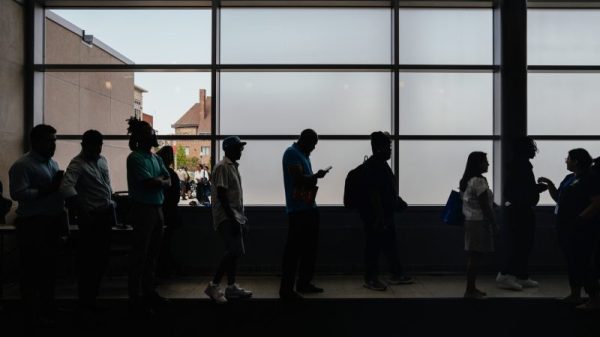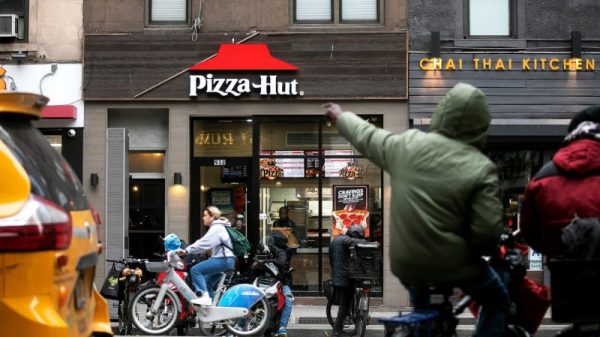One of the oldest threats in American politics is to pull up roots should an election not go your way. In the months before the 2016 presidential contest, for example, there were a number of threats from Americans to do so should Donald Trump win — promises that yielded post-election assessments of who hadn’t carried through with those plans.
After all, moving is easier promised than practiced. Selling a house, severing social connections, even abandoning citizenship in the most dramatic scenarios — these are a high price to pay to express dissatisfaction or concern about the election of a politician.
But it works the other way, too. States that pride themselves on their political worldviews are eager to encourage people to resettle within their boundaries. For some time, Texas has tried to woo Republicans from other states — particularly California — to come live in their less liberal state. There’s lots of evidence that communities have become more politically homogenous over time, but it’s hard to say with certainty how often people move across state lines simply out of concern over politics.
This brings us to the great state of Idaho.
I cannot say with firsthand experience that Idaho is a great state. Like most Americans (I assume), I’ve never been there. The state would like you to know, though, that it is gaining new residents and that, in apparent accordance with the political-sorting theory of intrastate relocation, that most of those new arrivals are Republicans.
Idaho Secretary of State Phil McGrane recently published a map showing new arrivals to Idaho over an unidentified time frame. It triggered at least one news article, in the Seattle Times, amplifying the idea that Republicans were hustling to start new lives in the Potato Gem State. Some 20,000 Washingtonians had moved to Idaho, after all, more than half of them Republicans. (About 1,000 came from Seattle, about a third of them Republicans, but that’s neither here nor there.)
Census Bureau data shows Idaho as one of the states where the highest percentage of residents lived in another state the year before. In 2022, only the District of Columbia (which, though not a state, is included in the data below), Alaska and Wyoming had lower percentages of residents that lived there the year before. Ten years ago, Idaho was 12th on the list, with 96 percent of its population having lived in Idaho 12 months before. In 2022, 95 percent had.
You’ll notice that the rankings above correlate to population. California saw the highest percentage of its population staying put relative to a year prior in 2012 and 2022. If 1,000 people move into a state, it constitutes a much larger percentage of a small state than a large one.
That’s the overarching point here, of course: Not that many people are moving to Idaho each year. In 2022, Census Bureau data indicate that about 88,000 people moved to Idaho, the 32nd-highest figure in the country Some more populous states had fewer new arrivals, like Utah or Alabama. But the gap between new arrivals and population (Idaho ranks 38th) wasn’t particularly wide.
There has been a bit of a shift in where new Idahoans are coming from. In 2012, Washington was the biggest source of new arrivals. In 2022, it was Californians.
But it’s important to note that Washingtonians were moving to Idaho years before this new partisan push! Washington adjoins Idaho, which is generally a good indicator of why someone is moving to a new state. Picking up and relocating your life is hard. Doing it by driving a few hundred miles is less so.
In 2012, 0.21 percent of the population of Washington moved to Idaho, according to the Census Bureau. In 2022, only 0.19 percent did. More Oregonians moved to Idaho in 2022, though — but so did more Nebraskans. Just under a third of new Idahoans came from California, according to 2022 data. Though many came from redder parts of the state, that doesn’t mean people aren’t moving from the bluer cities. But the Idaho data show that a plurality of new arrivals from San Francisco remained Democrats. In 2022, 76 percent of new Idaho residents came from states that voted for Joe Biden in 2020. But: In 2012, two-thirds still came from those same states.
A Washington Post analysis of voter files compiled by L2, a political data firm, indicates that in 2021 and 2022 about 20,000 new voters were registered in Idaho. Just under 14,000 of them were Republicans; fewer than 2,000 were Democrats. There are 990,000 voters in the state, meaning that the new arrivals make up less than 5 percent of voters in the state.
Those numbers suggest that more new residents of Idaho are Republicans, fitting a narrative about Republicans in blue states seeking riendlier political climates. What is obscured, though, is whether some of the imbalance indicated reflects an opposition to moving to Idaho from Democrats. It may not simply be that Republicans want to move to Idaho; it may also be the case that Democrats don’t.
This is the challenge with rhetoric about people pulling up roots to move to more politically amenable turf. The numbers are often small and the motivations countless, for and against such a move. What we can say, with confidence, is that neither Idaho’s nor Washington’s politics are going to change much in the wake of this particular bit of sorting.
Lenny Bronner contributed to this report.





























